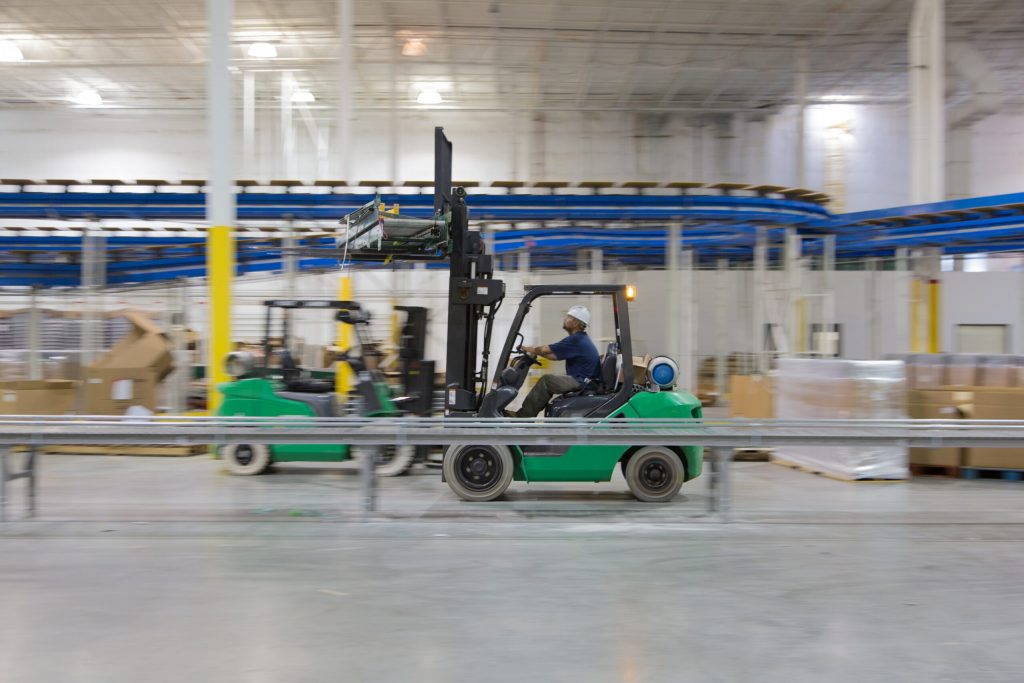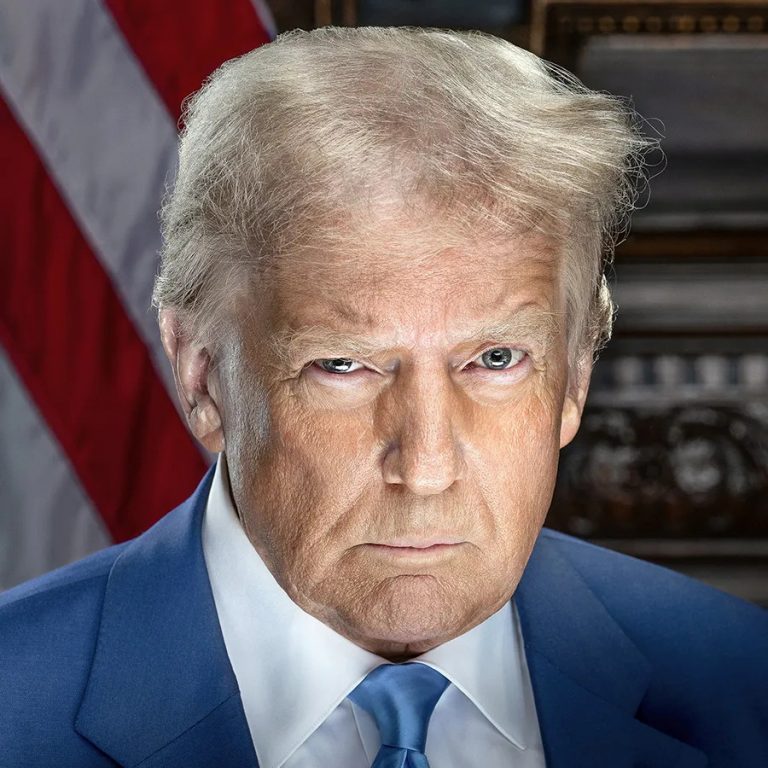Trump Tariffs Seek More Manufacturing, But Does Wisconsin Lack the Workers?
State has labor shortage. Business leaders skeptical about opening new factories.
One of the stated goals of President Donald Trump’s use of tariffs is to restore American manufacturing jobs. But new factories could take years to come online — and in Wisconsin, the labor shortage would pose a major challenge to bringing these facilities back.
So far in his second term, Trump has imposed and threatened an array of tariffs. After dramatic declines in the stock market followed his announcement of new tariffs early this month, the president said he would pause most of them for 90 days.
But baseline 10 percent tariffs remain in place on imports from all countries, and imports from China face a 125 percent tariff. Country-specific tariffs of varying rates are slated to take effect in July.
A tariff is a tax on goods imposed by the country that imports them. American companies that import products from abroad pay the cost, and typically pass those higher costs on to their customers in the form of higher prices.
“It’s an upfront expense,” said Buckley Brinkman, executive director of the Wisconsin Center for Manufacturing and Productivity, a public-private consulting partnership. “It’s not something that, ‘Oh, we’ll sell the goods and then pay the tariff.’ It’s a real cash flow issue.”
A survey of 153 Wisconsin employers released this winter by Wisconsin Manufacturers & Commerce shows 50 percent said increased tariffs would negatively affect their business, while 26 percent said it would have a positive effect and 24 percent said it would have no effect.
Companies need certainty to invest in facilities, equipment
For tariffs to work to bring back American manufacturing jobs, businesses need to believe that higher import costs will be in place for the long haul, said Harry Moser, founder of the Florida-based Reshoring Initiative.
Likewise, Brinkman said the shifting rollout of Trump’s tariffs — from being threatened to briefly implemented to paused — has made it hard for manufacturers to plan for the future.
New factories and equipment are long-term investments that companies expect to pay off over years, if not decades.
“If the rules keep changing, that raises the risk in any of those investments,” Brinkman said.
Kurt Bauer, president of the business lobbying group Wisconsin Manufacturers & Commerce, said he’s hopeful Trump can find trade agreements with many of the countries for which new tariffs are temporarily paused that level the playing field.
He said his members are especially concerned about unfair tactics that China uses to undercut American producers, including intellectual property theft and currency manipulation.
“Business is inherently uncertain and government shouldn’t make it worse,” Bauer said. “Having said that, many of our members say that this level-setting of tariffs and other costs that prevent U.S. manufacturers from exporting products abroad is necessary.”
‘There’s going to be nobody to man the factories’
But one of the biggest barriers to bringing manufacturing back, both in Wisconsin and nationally, is a labor shortage.
The U.S. Chamber of Commerce reports the latest data show there were around 1.2 million more jobs open nationally than there were unemployed workers. Wisconsin, meanwhile, has had more openings than job seekers since 2021.
Over the last decade, Moser said employers have told him the U.S. labor market is “weak, both in terms of quantity of people and quality of people.” He said there have been efforts in recent years that have helped some, pointing to high school apprenticeship programs. He says Trump’s goal of bringing manufacturing back hinges on workforce.
“If he achieves his objective, which is our objective to let’s say increase manufacturing by 40 percent — that’s 5 million workers,” Moser said. “If you don’t have the workforce, it’s not going to happen. There’s going to be nobody to man the factories.”

jaymarable (CC-BY)
In Wisconsin, a 2023 research report from WMC found the state’s median age was older than the rate nationally, and warned if the population doesn’t grow at a faster rate, workforce shortages would worsen.
“We don’t have enough workers for the jobs that we have, let alone if we want to grow a job (field),” Bauer with WMC said. “This is a significant challenge.”
At the same time, Trump has promised his administration would lead a mass deportation effort and tighten immigration restrictions, efforts that could deepen labor shortages.
Bauer and Brinkman also said they would expect manufacturing that comes back to the U.S. to be very automated due to the workforce shortages and the technological advancements in the industry over the last few decades.
“One of the shoe manufacturers brought a factory back to Oregon, and the president of U.S. operations … said, ‘Yeah, we brought a bunch of manufacturing back to the U.S., but we brought very few jobs,’” Brinkman said. “Because this shoe plant was almost totally automated.”
Bringing new plants online could take years
Even if a manufacturer decides to build a new factory in Wisconsin, Bauer noted it could take anywhere from one to five years to bring a plant online.
He said it could take a year if a company already owned the land and the municipality already had zoned it for manufacturing. But often developers need to acquire land, obtain permits from multiple levels of government and then make significant investments in facilities and equipment. They may also face research and development costs.
While manufacturers navigate a shifting international trade landscape, the Trump administration declined to renew federal funding contracts for Manufacturing Extension Partnership programs in 10 states that help small- and medium-sized domestic manufacturers make operational improvements.
Brinkman’s organization, the Wisconsin Center for Manufacturing & Productivity, is Wisconsin’s Manufacturing Extension Partnership program. Its contract with the federal government runs through the end of the year, Brinkman said. If the contract isn’t extended, the center would lose about one-third of its funding.
The organization has helped create more than $2.5 billion in economic impact and created or retained nearly 4,000 jobs in just the past two years, according to an economic impact report.
“It’s an extremely valuable organization, and we’re a little bewildered by the president’s actions in that we’re such a key part of keeping manufacturing healthy,” Brinkman said. “To start defunding it just doesn’t make a lot of sense to us.”
Trump says tariffs will bring back manufacturing, but Wisconsin’s labor shortage may stand in the way was originally published by Wisconsin Public Radio.
If you think stories like this are important, become a member of Urban Milwaukee and help support real, independent journalism. Plus you get some cool added benefits.























Is it a surprise to anyone that this individual who has failed in business countless times losing –what is it millions or billions?–thinks that his fantasy of having all business suddenly conducted in the U.S.– will happen without having a clue what it takes to even build the plants and then have the resources to pay qualified workers? NO–not a clue. In the meantime, individuals and families cannot afford food let alone pay rent or a mortgage. Where are the Republicans who have the courage to stop this craziness??!
Among the many “golden ages” that Trump promises to return us to, there is manufacturing. In Milwaukee, there was, in fact, a golden age of manufacturing. My dad, a grade school educated immigrant, worked in the same Nash//American Motors plant (Capital and Richards) for more than 40 years. On what he made, he was able to raise and feed four kids, buy a house, buy a new car (okay, it was a Nash or a Rambler, but still a car) every few years, and then retire with a real pension.
Those days are long gone, but also long gone is something else, something that goes beyond the impacts of globalization. Ten years after my dad retired, he went back for a visit to the plant, and when he came home, he just kept repeating the same thing over and over: “There weren’t any people. It’s all machines.” And that was in the early days of automation. There isn’t going to be a return to a “golden age” of manufacturing, at least not in terms of large numbers of secure, good-paying jobs.
But, if there are labor shortages, maybe they can recruit immigrant workers from Mexico or Central America.
Frank, I’m with your sentiment, but come on, Ramblers were cool as hell! And those little Nashes? Bring em back! I had friends who worked there til the end. Never forget the AMX’s, Javelins, and (yikes) the Pacers on display at the corner of Richard’s and Capitol.
Immigration has been the pipeline for adding persons to the workforce for a decades. With the Trump administration terrorizing illegal immigrants, potential legal, skilled immigrants from all continents would start seeing the United States as a country where bigotry, harassment and discrimination against all minorities is promoted by many conservative politicians. Like most all of the other policies of the Trump administration, one policy position undermines another one while both might be completely unhinged.